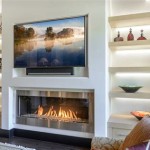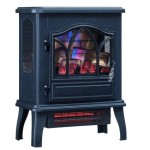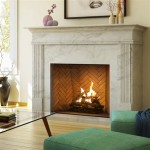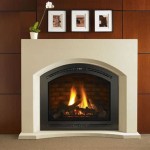Understanding Wall Switches for Gas Fireplaces
Gas fireplaces offer a convenient and aesthetically pleasing heating solution for residential and commercial spaces. Unlike traditional wood-burning fireplaces, gas fireplaces require less maintenance and offer immediate heat at the flip of a switch. This ease of operation is often made possible through the use of a wall switch, a seemingly simple device that performs a crucial function in controlling the fireplace's operation. Understanding how a wall switch interacts with a gas fireplace, the different types available, and potential troubleshooting steps can enhance the overall user experience and ensure safe and reliable operation.
The integration of a wall switch into a gas fireplace system provides a level of convenience and control that contributes to the appeal of these appliances. Instead of manually adjusting gas valves or lighting pilot lights, users can initiate and extinguish the flame with the flick of a switch, similar to operating a light. This simplification makes gas fireplaces accessible to a wider range of individuals, including those with mobility limitations or those who prefer a more automated and user-friendly heating solution.
The wall switch acts as an intermediary between the user and the fireplace's control system. When the switch is activated, it sends a signal to the fireplace's gas valve, which then opens, allowing gas to flow to the burner. The ignition system, whether it's a pilot light or an electronic igniter, then ignites the gas, initiating the flame. When the switch is deactivated, the signal is interrupted, causing the gas valve to close and extinguishing the flame. This process provides a straightforward and reliable method for controlling the fireplace's heating output.
Types of Wall Switches Used in Gas Fireplaces
Several types of wall switches are commonly employed in gas fireplace systems, each offering varying levels of functionality and integration. The simplest type is a standard on/off toggle switch, which provides basic control over the fireplace's operation. When the switch is in the "on" position, the fireplace is activated, and when it's in the "off" position, the fireplace is deactivated. This type of switch is often used in older or more basic gas fireplace models.
Another common type is a rocker switch, which operates in a similar manner to a toggle switch but uses a rocker-style mechanism for activation and deactivation. Rocker switches are often preferred for their modern aesthetic and ease of use. They are frequently found in newer gas fireplace installations.
More advanced systems may utilize a digital wall switch, which offers more precise control over the fireplace's operation. These switches often incorporate features such as temperature control, timer settings, and remote control compatibility. Digital wall switches typically communicate with the fireplace's control system via a wired or wireless connection, providing a more sophisticated user interface.
In some cases, a low voltage switch is used. These switches are connected to a transformer, which steps down the voltage, making the switch safer to operate. This is particularly important in environments where moisture or condensation might be present, reducing the risk of electrical shock.
Wiring Considerations for Wall Switches
Proper wiring is paramount for the safe and reliable operation of a gas fireplace wall switch. The wiring should adhere to all applicable building codes and regulations, and it is typically recommended that a qualified electrician perform the installation or any necessary repairs. Incorrect wiring can lead to malfunctions, electrical hazards, and potential damage to the fireplace or the surrounding environment.
Generally, the wiring involves connecting the switch to a low-voltage circuit that controls the gas valve. This circuit may also include a thermopile, which generates a small electrical current when the pilot light is lit. This current is used to keep the gas valve open, even after the switch is released. The wiring diagram for the specific gas fireplace model should be consulted to ensure proper connections.
The wire gauge used for the connection is also crucial. Using the appropriate gauge ensures that the wiring can handle the electrical current without overheating or causing a voltage drop. The manufacturer's specifications will outline the recommended wire gauge for the specific application.
When replacing an existing wall switch, it is important to disconnect the power supply before commencing any work. This prevents the risk of electrical shock. It's also useful to photograph the existing wiring configuration before disconnecting the old switch. This picture serves as a reference when connecting the new switch, reducing the chance of incorrect wiring.
Troubleshooting Common Wall Switch Issues
Several common issues can arise with gas fireplace wall switches, impacting the fireplace's functionality. If the fireplace fails to ignite when the switch is activated, the first step is to check the power supply. Ensure that the circuit breaker is not tripped and that the switch is properly connected.
If the power supply is confirmed, the next step is to examine the switch itself. A faulty switch may not be making proper contact, preventing the signal from reaching the gas valve. A multimeter can be used to test the switch's continuity. If the switch is found to be faulty, it should be replaced.
Another potential issue is a malfunctioning gas valve. If the switch is functioning correctly but the gas valve is not opening, the valve may need to be inspected and potentially replaced. Gas valve replacement should ideally be performed by a certified HVAC technician.
Sometimes, the issue lies not with the switch or the valve, but with the thermocouple or thermopile. If these components are damaged or malfunctioning, they may not be generating enough electrical current to keep the gas valve open. These components can be tested with a multimeter and replaced if necessary.
Finally, problems can stem from loose or corroded wiring connections. Inspecting the wiring connections and cleaning or tightening them as needed can often resolve intermittent issues. Using dielectric grease on the connections can help prevent corrosion in the future.
In conclusion, the wall switch serves as an integral component in the operation of a gas fireplace, providing a convenient and user-friendly method for controlling its heating output. By understanding the different types of switches, wiring considerations, and potential troubleshooting steps, users can maintain the reliable and safe operation of their gas fireplace systems.

Gas Fireplace Wall Switch Faq Montigo

Wall Switch For Gas Fireplaces Hechler S Mainstreet Hearth Home Troy Missouri

Superior Ws S Tmr Wall Mount Switch Kit With Countdown Timer

Heat N Glo Multi Functional Wall Control Fine S Gas

Town Country Fireplaces Wall Switch D2 Series No Blue Tooth 80002802 Friendly Fires

Creating A Smart Fireplace Switch With Sy Relay Hometecher

Smarten Up Your Gas Fireplace This Winter The Digital Media Zone

Gas Fireplace Has Embedded Switch Rather Than Wall How Do I Get To It Doityourself Com Community Forums

How To Light A Gas Fireplace The Home Depot

Wall Mount On Off Switch Kit Millivolt Gwms2 01997 F0245
Related Posts








